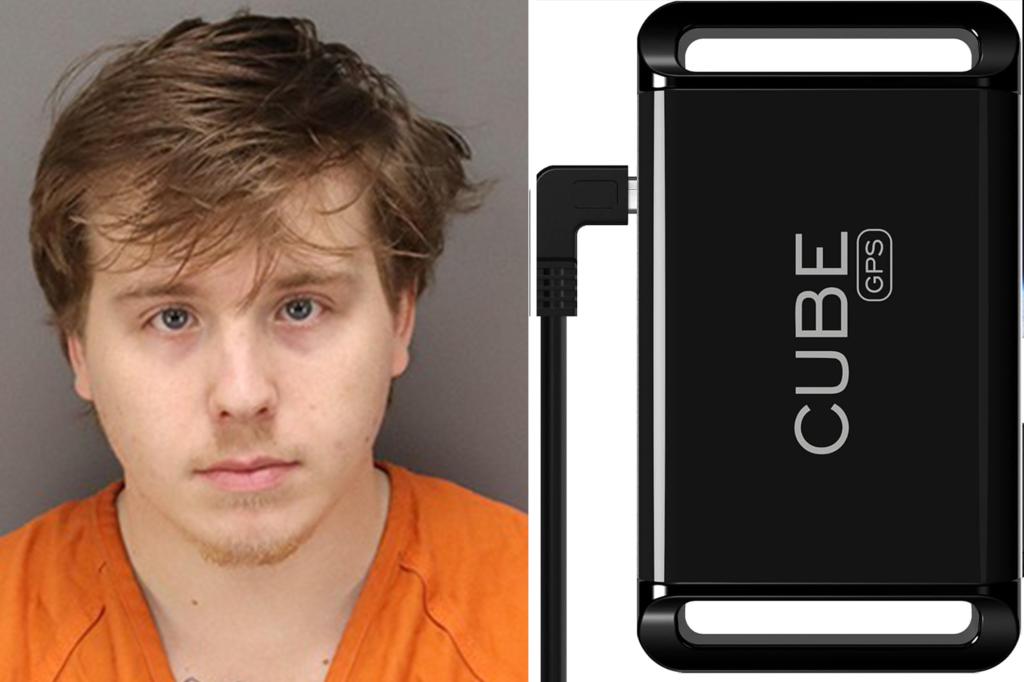The case of Tyler Michael Strack, a 22-year-old Chipotle worker from Clearwater, Florida, serves as a stark reminder of the potential dangers lurking within seemingly innocuous technology. Strack’s ill-conceived attempt to rekindle a past romance took a dark turn when he employed a tracking device to monitor the whereabouts of his former fling, ultimately leading to his arrest on a felony charge. This incident underscores the growing concern surrounding the misuse of readily available tracking technology and its potential to facilitate stalking and harassment. The ease with which these devices can be obtained and deployed raises serious questions about privacy and security in an increasingly interconnected world.
The unsettling saga began when the unnamed woman discovered a Cube tracker affixed to her vehicle in August. Cube trackers, small, unobtrusive devices readily available at electronics retailers like Best Buy, are typically marketed for locating lost items such as keys, wallets, or luggage. However, in Strack’s hands, this seemingly benign technology became a tool for unwanted surveillance. The woman, understandably alarmed by the discovery, promptly reported the incident to the Pinellas County Sheriff’s Department, setting in motion an investigation that would unravel Strack’s clandestine scheme.
Investigators swiftly traced the purchase of the Cube tracker back to Strack through his email address, which was linked to the transaction at Best Buy. This digital trail provided crucial evidence linking Strack to the tracking device and ultimately led to his apprehension. The woman revealed to authorities that she and Strack had engaged in a brief sexual relationship several years prior, but the relationship had ended without any significant contact in recent years. This detail highlighted the unsettling nature of Strack’s actions, transforming a seemingly harmless attempt at reconnection into a disturbing act of intrusive surveillance.
Confronted with the evidence, Strack confessed to purchasing the tracker and surreptitiously placing it on the woman’s vehicle while it was parked outside her home. His stated intention was to “run into” the victim, a flimsy pretext that did little to mitigate the severity of his actions. Strack’s admission painted a picture of a calculated plan to monitor the woman’s movements without her knowledge or consent, a violation of her privacy and a clear demonstration of stalking behavior.
The charges against Strack, specifically the installation of a tracking device, carry significant legal ramifications. While initially released on a $5,000 bail, the felony charge underscores the seriousness of his offense. This case serves as a cautionary tale, highlighting the potential misuse of tracking technology and the legal consequences that can follow. It also raises broader questions about the ethical implications of readily available surveillance tools and the need for stricter regulations to prevent their misuse in cases of stalking and harassment.
This incident also highlights the vulnerability of individuals in an era of increasingly sophisticated and accessible tracking technology. The ease with which Strack obtained and deployed the device underscores the need for greater awareness and vigilance. Individuals should be mindful of the potential for such devices to be used for malicious purposes and take precautions to protect their privacy. This case also emphasizes the importance of reporting suspicious activities to law enforcement, as the woman’s prompt action played a crucial role in bringing Strack to justice. Furthermore, it underscores the need for continued dialogue and legislative action to address the evolving challenges posed by readily available surveillance technology in the digital age. The balance between technological advancement and individual privacy remains a delicate one, and cases like this highlight the urgent need to find effective solutions that protect individuals from unwanted surveillance and harassment.










